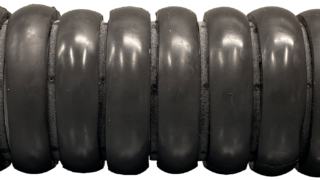– New technology makes it possible to see inside the concrete.
Our infrastructures are ageing and ultimately degrading their built quality. There is dire need to monitor infrastructure health and maintain them. Across the globe, a major part of the infrastructure budget is diverted to repairs or replacements of the structures.
According to Mckinsey’s article, “Building the infrastructure for the future of mobility”, around 50-70 percent of Europe’s transportation infrastructure budget is spent on replacing and maintaining ageing buildings. On the other side, maintaining these infrastructures occurs to be a complex and expensive task.
We have massive concrete structures around the globe that were built ages ago, and a majority of them need an immediate inspection to retain their built quality and avoid future accidents or collapses. Failure of any infrastructure leads to loss of lives and capital. Some of the common reasons that cause structural failure could be carelessness during construction, substandard civil practices, ageing, and environmental effect, lack of preliminary information, lack of maintenance, lack of knowledge or advanced tools.
Considering some of the latest incidents in the transportation segment, bridge collapses reported significant losses in terms of lives and capital. As per the report published by American Road and Transportation Builders Association, alone in the U.S., there are around 45,000 structurally deficient bridges and over 171.5 million vehicles pass these bridges every day. The analysis also found that 220,000 bridges need repair, while 79,500 bridges need replacement. ARBTA estimated that it would take approximately 40 years to repair the structurally deficient bridges at the cost of $41.8 Billion.
Some of the related incidents of collapses include pedestrian Bridge at Florida International University in 2018, Trench collapse in Miami, 2018, Double Tee Collapse at the Miami-Dade College West Campus Parking Garage in 2016, and many more.
What makes the concrete structure weak?
Concrete infrastructures are durable and meant to withstand almost 100 years. However, every material has its own limitations and bonding capabilities which makes the material weak internally. Reactions with common elements, exposure to harsh weather, and weak construction can all lead to concrete failure. Deterioration occurs because of the by-product of this electrochemical process. The pressure generated in the concrete lead to structural deterioration and cause crack over time.
Below are some of common factors that contribute to degradation of construction quality,
- Damage due to construction defects, errors in design, unexpected overloading, and loading criteria.
- Structural deficiency resulting from marine environments, abrasion of granular materials, and movement caused due to physical characteristics.
- Damage by natural disasters and chemical attacks.
Climate change is one may have several impacts on infrastructure safety and performance. Given that potential climate change scenarios could affect infrastructure, it is crucial to identify appropriate adaptation, and risk management strategies.
Some of the common reasons that degrade the concrete quality are.
- Accelerated degradation of material
- Frequent flooding
- Damage to pavements
Observing the risks, it is important to have efficient management of bridges in a changing climate and can be of considerable benefit to bridge managers and transport administrations in adapting their assets to the future conditions.
If designers, inspectors, asset owners, and construction companies become aware of the types of failures at the earlier stage, a great advancement would be made toward safer structures. Preparing for both faster development cycles and the rollout of various integrated platforms can enable operators to acquire new competencies in planning, maintenance, and operations. To acquire these new competencies fast, operators can engage in partnerships with technology providers.
Why deploying competent concrete inspection technology is a need?
Concrete structure, majorly bridges are more prone to risk due to increased events of environmental disasters and climate change. Regardless of the reasons for collapses, the impact is more shocking, and consequences could lead to loss of capital, life, and infrastructure.
For example, Bridges that are built on various water bodies are more prone to a common defect known as tendon after certain duration. Mainly, the bridges built on ocean are expose to saltwater, which leads to corrosion and weakens the structural capabilities. Existing technologies used for concrete scanning such as GPR have limitations and lack the flexibility to speed up the inspection process. In similar case, the ultrasound technology can scan the voids beyond the metal present in the bridge structure.
Elop Insight being a pioneer solution in NDT testing
Elop Insight, worlds first ultrasound rolling scanner is a new age solution for concrete infrastructure inspection and monitoring. It enables smart and efficient method to scan complex concrete structure. One of the key advantages of Elop Insight is, it can scan large area of concrete bridge less time just by rolling over the tendons and transmit data at real time.
Elop’s vision is to provide asset owners and managers with solutions that improve safety, extend asset lifetime, minimize total lifecycle cost, and environmental footprint.
With the deterioration of concrete structures happening at an alarming rate, asset owners need to acknowledge the risk and prioritize adopting technologies that make structural inspection time-efficient and result-oriented. With the advancement in inspection technology, asset owners can benefit from technologies like Elop Insight to make their assets safe and long-lasting.
Read more stories:
Searching for abnormalities below the surface




